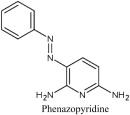Pristine and Supported Zno-Based Catalysts for Phenazopyridine Degradation with Direct Solar Light
Wed, 2010-04-21 14:32 — Hikmat S. Hilal, D.Sc.
Journal Title, Volume, Page:
Solid State Sciences Volume 12, Issue 4, Pages 578-586
Year of Publication:
2010
Preferred Abstract (Original):
In search for safe techniques to manage waste pharmaceutical compounds drained in water, solar-driven degradation of phenazopyridine (a model drug) was investigated in aqueous media using different ZnO-based catalyst systems. Naked ZnO, CdS-sensitized ZnO (ZnO/CdS) and activated carbon-supported ZnO (AC/ZnO) have been studied. Both naked ZnO and AC/ZnO were highly efficient in mineralizing phenazopyridine, reaching complete removal in not, vert, similar50 min, with AC/ZnO having the higher edge. The ZnO/CdS system showed lower efficiency, due to screening of light by CdS. Moreover, the tendency of CdS to leach out Cd2+ ions discouraged the use of CdS as sensitizer in this work. In both ZnO and AC/ZnO systems, the photo-degradation reaction was induced by the UV tail of the solar light. The visible region, with wavelength longer than 400 nm, failed to induce photo-degradation. The reaction was faster with higher catalyst loading, until a maximum efficiency was reached at a certain concentration. The rate of reaction increased with higher drug concentrations up to a certain limit. The effect of pH value was studied, and the catalysts showed highest efficiencies at pH close to 7. Stability of ZnO to degradation was studied. Both catalyst systems showed lowered efficiencies on recovery and reuse. The results suggest that complete mineralization of waste drugs, commonly dumped in sewage water, with direct solar light is a potentially feasible strategy using the AC/ZnO catalyst.


